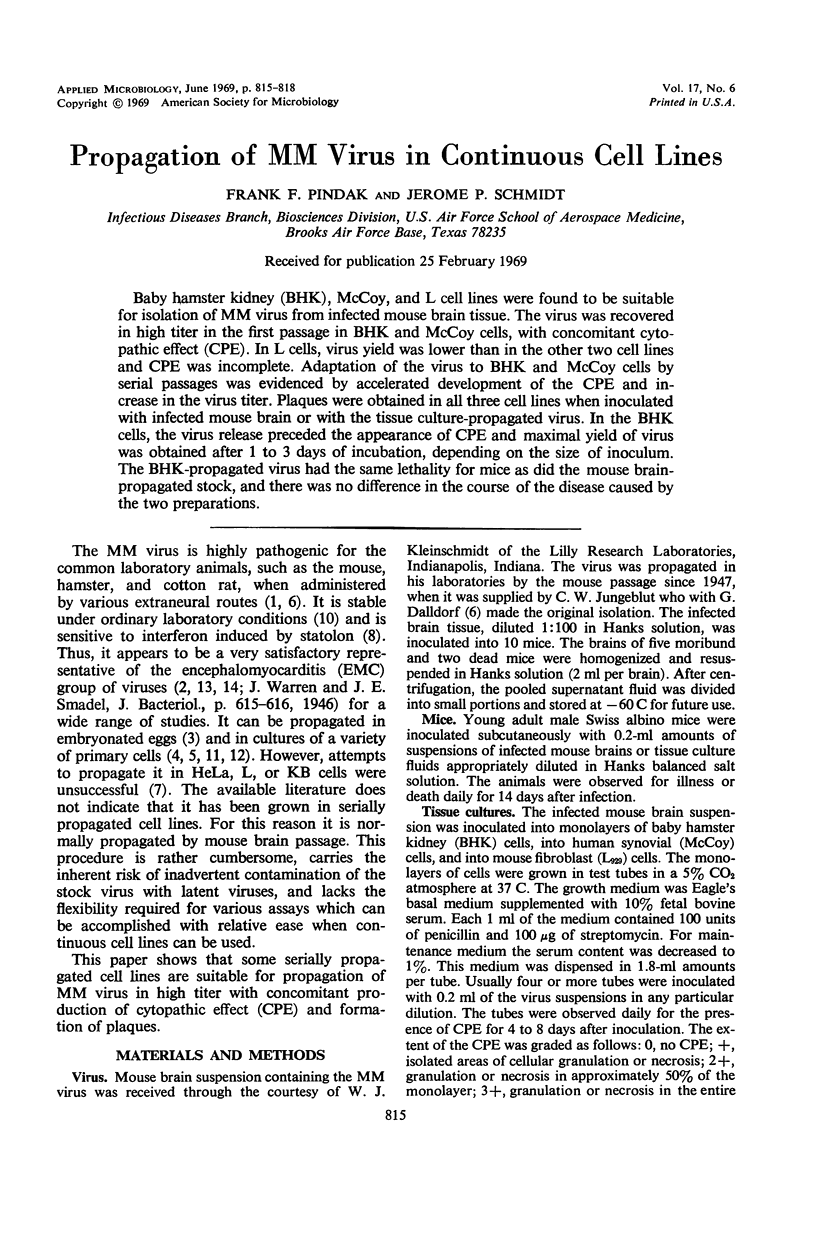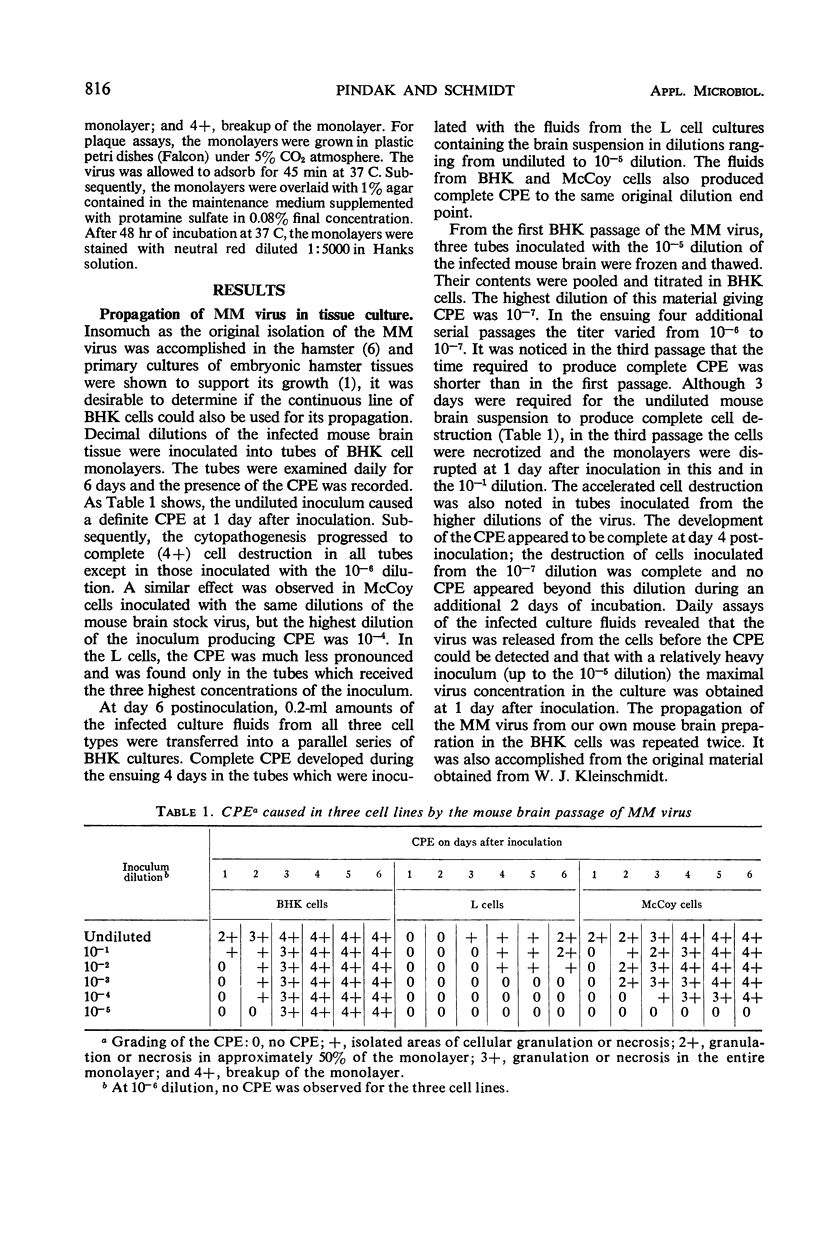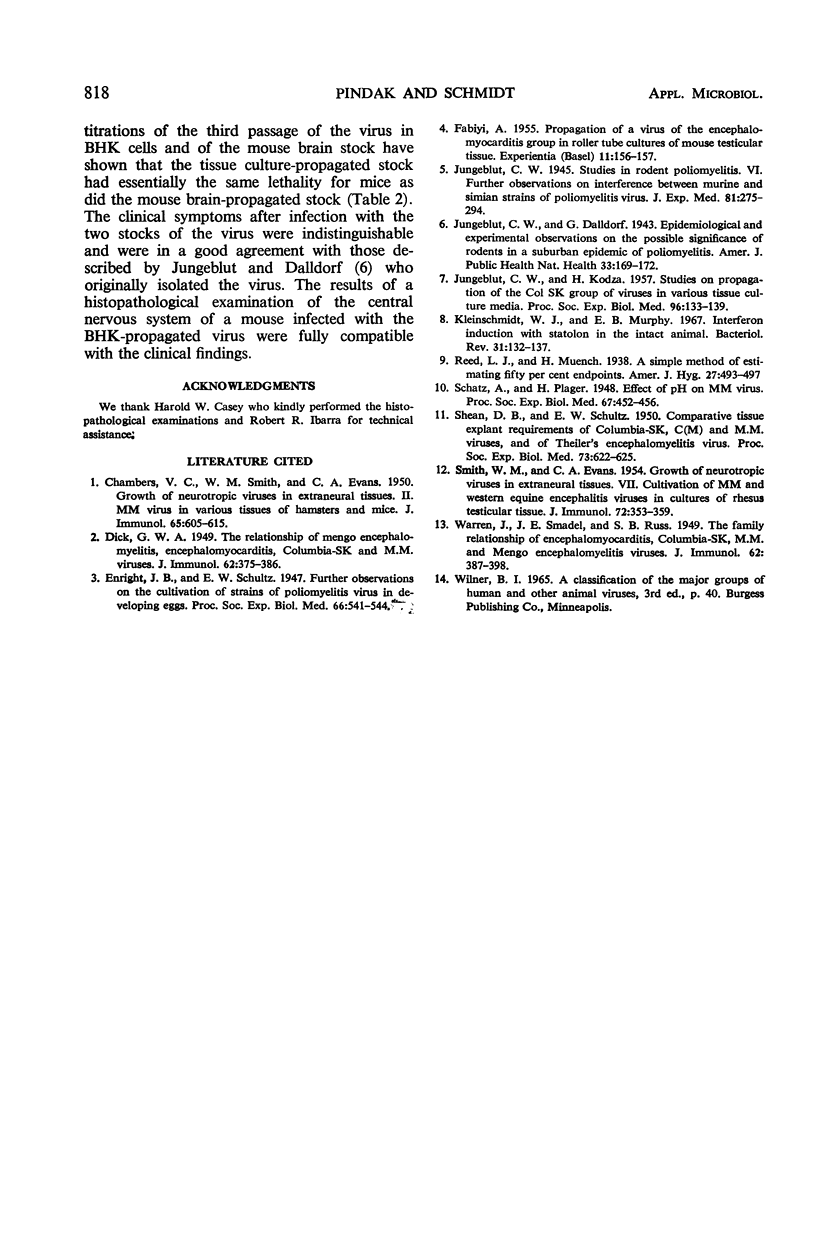Abstract
Baby hamster kidney (BHK), McCoy, and L cell lines were found to be suitable for isolation of MM virus from infected mouse brain tissue. The virus was recovered in high titer in the first passage in BHK and McCoy cells, with concomitant cytopathic effect (CPE). In L cells, virus yield was lower than in the other two cell lines and CPE was incomplete. Adaptation of the virus to BHK and McCoy cells by serial passages was evidenced by accelerated development of the CPE and increase in the virus titer. Plaques were obtained in all three cell lines when inoculated with infected mouse brain or with the tissue culture-propagated virus. In the BHK cells, the virus release preceded the appearance of CPE and maximal yield of virus was obtained after 1 to 3 days of incubation, depending on the size of inoculum. The BHK-propagated virus had the same lethality for mice as did the mouse brain-propagated stock, and there was no difference in the course of the disease caused by the two preparations.
Full text
PDF



Selected References
These references are in PubMed. This may not be the complete list of references from this article.
- CHAMBERS V. C., SMITH W. M., EVANS C. A. Growth of neurotropic viruses in extraneural tissues. J Immunol. 1950 Dec;65(6):605–615. [PubMed] [Google Scholar]
- FABIYI A. Propagation of a virus of the encephalomyocarditis group in roller tube cultures of mouse testicular tissue. Experientia. 1955 Apr 15;11(4):156–157. doi: 10.1007/BF02158481. [DOI] [PubMed] [Google Scholar]
- JUNGEBLUT C. W., KODZA H. Studies on propagation of the Col SK group of viruses in various tissue culture media. Proc Soc Exp Biol Med. 1957 Oct;96(1):133–139. doi: 10.3181/00379727-96-23413. [DOI] [PubMed] [Google Scholar]
- Jungeblut C. W., Dalldorf G. Epidemiological and Experimental Observations on the Possible Significance of Rodents in a Suburban Epidemic of Poliomyelitis. Am J Public Health Nations Health. 1943 Feb;33(2):169–172. doi: 10.2105/ajph.33.2.169. [DOI] [PMC free article] [PubMed] [Google Scholar]
- Kleinschmidt W. J., Murphy E. B. Interferon induction with statolon in the intact animal. Bacteriol Rev. 1967 Jun;31(2):132–137. doi: 10.1128/br.31.2.132-137.1967. [DOI] [PMC free article] [PubMed] [Google Scholar]
- SHEAN D. B., SCHULTZ E. W. Comparative tissue explant requirements of Columbia-SK, C(M) and M.M. viruses, and of Theiler's encephalomyelitis virus. Proc Soc Exp Biol Med. 1950 Apr;73(4):622–625. doi: 10.3181/00379727-73-17766. [DOI] [PubMed] [Google Scholar]
- SMITH W. M., EVANS C. A. Growth of neurotropic viruses in extraneural tissues. VII. Cultivation of MM and Western equine encephalitis viruses in cultures of rhesus testicular tissue. J Immunol. 1954 May;72(5):353–359. [PubMed] [Google Scholar]


